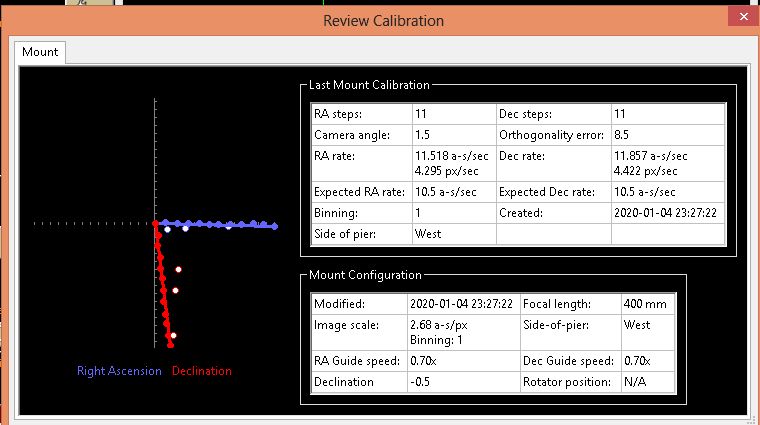|
Advertisement / Annons: |
My astronomy project:
|
Contents:
Related projects:
Note: |
16, Test of auto-guiding:I had to wait three months until I had a clear sky again. Earlier page with drift align and auto guiding is moved to tutorial section: Drift align and auto guide calibration. And auto guiding to here: EQMOD and PHD2 setup. 
After some struggle with the setup of the month I could start to calibrate the auto guiding, I auto guide with the PHD2 software. With earlier test I had some strange problem with the angle between RA and DEC axis, now it looks much better. When I checked the polar alignment it had an error of 20', I have to adjust it better later. 
When checking the total rms error of auto guiding I'm now at low 0.69" error, that's good. Before the rebuilt of the mount I typically had total rms errors from 0.85" to 1.3". But even earlier when I had an off-axis adapter I had very low error, somewhere from 0.5" to 0.8" and then without belt drive. I spent the night with taking photos of the galaxies M102 and M 106, if they are presentable I put them up on my homepage later. The exposures are 60 x 60 seconds at ISO 1600, that's is maximum from my light polluted balcony. At last, a night with clear sky:
I think I can tweak the PHD2 parameters and get even lower rms error.
|
|